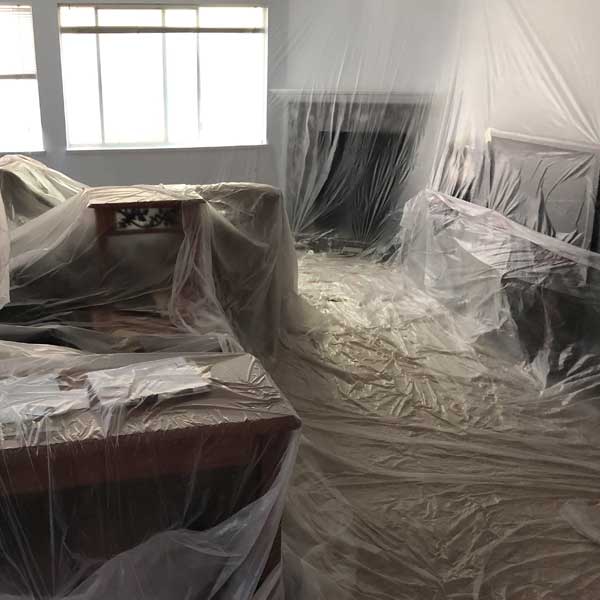Need Repair in The Great Vancouver Abbotsford Areas – Contact Us >
Drywall, often referred to as gypsum board or sheetrock, plays a foundational role in constructing homes across Canada. As a seasoned industry tradesman and highly skilled professional, I’ve encountered numerous questions and misconceptions about drywall over the years. In this article, I aim to provide an in-depth perspective on various aspects of drywall, addressing topics such as when to replace drywall, the time it takes to drywall a house, its suitability for residential construction, regional variations in drywall practices, the cost of drywalling a house in Canada, and techniques for retexturing and painting drywall.
When to Replace Drywall
Drywall is a durable material, but it’s not immune to wear and tear. There are several scenarios in which you might need to replace drywall:
- Water Damage: Prolonged exposure to water or moisture can lead to mold growth and structural damage. If your drywall has visible water stains, warping, or mold, it’s time for a replacement.
- Significant Damage: Severe impacts, such as large holes or extensive cracks, may necessitate replacing the affected sections of drywall. Smaller holes and cracks can typically be repaired.
- Aging and Deterioration: Over time, drywall can develop cracks and show signs of aging. While minor cracks are common, extensive deterioration may require replacement.
- Remodeling and Renovation: When renovating or changing the layout of your home, you may need to replace drywall to accommodate new walls, openings, or electrical work.
Time it Takes to Drywall a House
The time required to drywall a house depends on several factors:
- Size of the House: Larger houses naturally take more time to drywall than smaller ones.
- Complexity of Design: Intricate architectural designs, vaulted ceilings, or unusual wall shapes can add to the time needed.
- Crew Skill and Size: An experienced and efficient crew can complete the job faster than a smaller or less experienced team.
- Preparation Work: Preparing the space, including framing, insulation, and electrical work, can also impact the timeline.
On average, a team of skilled professionals can drywall a standard-sized house in about two to three weeks. However, this estimate can vary significantly based on the factors mentioned.
Is Drywall Good for a House?
Drywall is an excellent choice for residential construction in Canada. It offers several advantages:
- Fire Resistance: Drywall is inherently fire-resistant, providing valuable safety in the event of a fire.
- Soundproofing: It helps reduce sound transmission between rooms, enhancing privacy and comfort.
- Smooth Finish: Drywall provides a smooth, paintable surface that contributes to the aesthetics of a home.
- Cost-Effective: Drywall is cost-effective compared to other wall finishing options like plaster.
- Energy Efficiency: When properly installed with insulation, drywall can improve a home’s energy efficiency.
Drywall Terminology in Canada
In Canada, drywall terminology is consistent with the industry standards. You’ll often hear terms like:
- Gypsum Board: The formal name for drywall, often used in construction documents.
- Drywall Panel: A single sheet of drywall.
- Screw Patterns: The recommended spacing and placement of screws used to secure drywall panels to studs.
Thickness of Drywall in BC
In British Columbia, as in most of Canada, the standard thickness for residential drywall is 1/2 inch (12.7 mm). This thickness is suitable for most interior applications. However, for areas requiring increased soundproofing or fire resistance, 5/8 inch (15.9 mm) drywall is often used.
Cost to Drywall a House in Canada
The cost to drywall a house in Canada varies based on factors like location, house size, labor costs, and materials. On average, you can expect to pay between $1.50 to $3.50 per square foot for professional drywall installation. This cost includes materials and labor.
Retexturing Old Drywall
If you want to refresh the look of your old drywall, retexturing is a viable option. Common techniques include skim coating, applying textured paint, or using textured drywall compound. The choice depends on your desired finish and the condition of the existing drywall.
Paint Over Drywall Patch
When patching small holes or cracks in drywall, it’s crucial to prime the patched area before painting. This ensures a uniform finish and helps the patch blend seamlessly with the surrounding wall. Use a high-quality primer and matching paint color for the best results.
Texture Directly on Drywall
Texture can be applied directly to drywall to achieve various decorative effects. This involves using texture compounds and tools to create patterns or textures on the wall surface. Popular options include orange peel, knockdown, and popcorn textures, each offering a unique visual appeal.
Conclusion
Drywall is an essential element in Canadian residential construction, providing durability, fire resistance, and aesthetic appeal. Understanding when to replace drywall, the time it takes to drywall a house, its suitability for residential use, regional variations, costs, and texture and paint techniques can help homeowners make informed decisions about this critical building material. As a seasoned tradesman, I can attest to the importance of drywall in creating safe, comfortable, and visually appealing homes across Canada.





